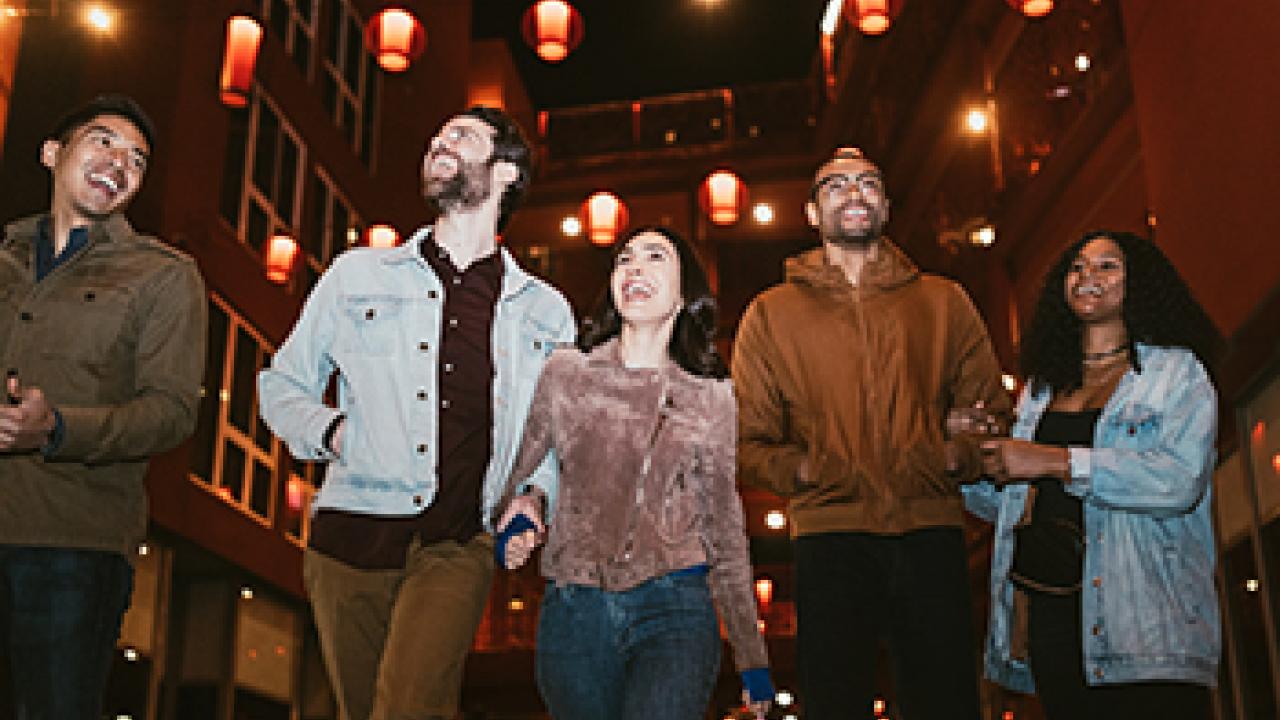
We often ignore COVID-19 risks with people we know, psychologists say
Our perception of low COVID-19 danger extends to friends, family and nice strangers
It may be our longing for friends and family. It may be instinctive. It may be that we’re exhausted. Whatever the reasons, many of us see familiar people as less of a COVID-19 risk, psychologists say.
This phenomenon is not about people inside your household. And it reaches beyond social pods – which heath experts say are often iffy. New studies show that we almost instinctively drop our guard with people we know although we often have no clue about their health protocols.
“Someone we trust or love can catch COVID-19 just as easily as anyone else,” said Kaye Hermanson, UC Davis Health clinical psychologist in the Department of Physical Medicine and Rehabilitation.
“But studies show the better we know someone and the more we like them, the less risky they seem,” she said. “That partly explains the gatherings of family and friends over the holidays – and look at the COVID-19 carnage those created.”
This desire to trust familiar people is compounded by the length of the pandemic and our social isolation. The people we trust can include neighbors we see regularly through our windows, the mail carrier or regular supermarket clerk or even our barista. It could also be someone we haven’t seen for months who we miss.
“We all value our social contacts now because we have so few of them.” Hermanson said. “That also can prompt us to ignore the risk.”
The assumption of safety also includes “honest and agreeable strangers,” according to studies published in Psychological Science. On the other hand, we tend to see people who are gruff, distant or just different as more dangerous in general so more likely to carry the coronavirus.
A possible survival mechanism
Some research suggests this reaction might be trained into us from early days of human evolution.
“Studies show the better we know someone and the more we like them, the less risky them seem. That partly explains the gatherings of family and friends over the holidays – and look at the COVID-19 carnage those created.”
— Kaye Hermanson
“It’s something of a survival mechanism,” Hermanson said. “As humans were evolving, we gathered in groups or tribes for safety. People in the tribe were the ones you trusted. Any stranger was a potential threat.”
But if strangers appeared agreeable, they seemed to pose less of a threat. These behavioral risk assessments connect to how we view COVID-19 risks.
The problem with COVID-19, however, is that it’s an invisible threat. It doesn’t alert our usual survival instincts.
“Humans also recognize threats of illness, whether it’s a rash or coughing and sneezing,” Hermanson said. “Those are clear symptoms and we know to be cautious, even with friends and family. But COVID-19 is a threat we can’t see.”
Researchers at the Centers for Disease Control and Prevention (CDC), in a study published by the Journal of the American Medical Association, confirmed that more than half of the COVID-19 cases in the U.S. were transmitted by people with no symptoms. That means the carriers were either asymptomatic of presymptomatic. And an earlier study by the CDC estimated this percentage could even be above two-thirds of all cases.
“If you combine all those forces – how much we miss our social connections, our desire to trust people we know, and the unseen danger of COVID-19 – that explains why the disease can spread quickly within social networks,” Hermanson said. “It also explains, at least a little, why some people don’t want to accept the idea that their families and friends are a risk or why some people are lulled into unsafe social activities.”
How to overcome your instincts
- Establish consistent rules and apply them to everyone, including friends and family.
“Make your rule: ‘Everyone wears a mask, especially indoors,’” Hermanson said. “Everyone keeps a social distance. And now that the weather is getting warmer, keep interactions outside, if at all possible.”
“Humans recognize threats of illness, whether it’s a rash or coughing and sneezing ... But COVID-19 is a threat we can’t see.”
— Kaye Hermanson
- Talk about where everyone has been and who they’ve been around.
“Did you hang out with other friends? Did you go to work or the mall? Did you get in the car with family who flew into town?” Hermanson said. “These are the kinds of questions to ask. I know these are hard conversations to have. They’re uncomfortable and they can feel accusatory, like you’re saying, ‘What are you doing wrong?’ But they are very important if you want to make good choices about your health.
- Make sure everyone agrees on what is safe behavior.
“This gets back to having consistent rules,” Hermanson said. “They make it easier to have these conversations.”
- Be cautious about a social bubble or pod – and wear masks and keep a distance if you’re in one.
“They sound like a good idea, but those bubbles are far more permeable than we think,” Hermanson said. “Everyone in it has to stick with the safety rules and be very careful and very honest. You have to tell each other when you’ve been near anyone outside the bubble, even your extended family or your doctor. And do not join two different bubbles.”
Hermanson says it might help to keep repeating what she tells herself and her family:
“There is a light at the end of this darkness,” Hermanson said. “Hold on just a little longer. Don’t get sick now when we’re so close to things getting better.”